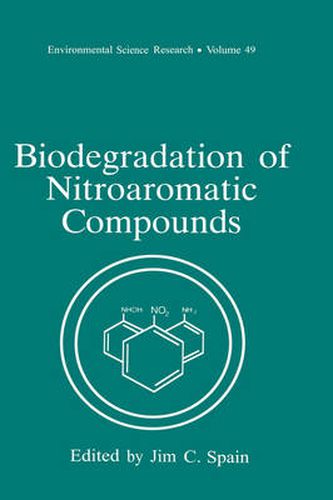Readings Newsletter
Become a Readings Member to make your shopping experience even easier.
Sign in or sign up for free!
You’re not far away from qualifying for FREE standard shipping within Australia
You’ve qualified for FREE standard shipping within Australia
The cart is loading…






This title is printed to order. This book may have been self-published. If so, we cannot guarantee the quality of the content. In the main most books will have gone through the editing process however some may not. We therefore suggest that you be aware of this before ordering this book. If in doubt check either the author or publisher’s details as we are unable to accept any returns unless they are faulty. Please contact us if you have any questions.
During the past five years increased awareness of environmental contamination by nitroaromatic compounds has led to a dramatic increase in research on their biodegradation. The resulting discoveries have markedly extended our understanding of degradation mecha nisms and pathways in bacteria and fungi. Futhermore, this new basic knowledge promises the development of field applications of biodegradation systems for nitroaromatic com pounds. In May of 1994, an International Symposium on the Biodegradation of Nitro aromatic Compounds was held in Las Vegas, Nevada. This symposium brought together the scientists at the frontiers of research into the biodegradation of nitro aromatic compounds. The invited speakers were asked to review their area of expertise and write a critical, comprehensive synthesis of their work and related work by others. This book is the result of their efforts. The emphasis of the reviews is on basic research in biodegradation and biotransfor mation. Therefore, the reactions of nitroaromatic compounds in plants, animals, bacteria, fungi, soil, and even nonbiological systems are considered. The goal of the work is to provide the reader with an appreciation of the tremendous range of possibilities for metabolism of aromatic nitro compounds and the experimental approaches used to understand them. This volume should be of interest to biochemists, microbiologists, engineers, toxicologists, and anyone interested in the behavior of synthetic chemicals in the environment or in living systems. Furthermore, a variety of commercial applications can be envisioned for some of the reactions described here.
$9.00 standard shipping within Australia
FREE standard shipping within Australia for orders over $100.00
Express & International shipping calculated at checkout
This title is printed to order. This book may have been self-published. If so, we cannot guarantee the quality of the content. In the main most books will have gone through the editing process however some may not. We therefore suggest that you be aware of this before ordering this book. If in doubt check either the author or publisher’s details as we are unable to accept any returns unless they are faulty. Please contact us if you have any questions.
During the past five years increased awareness of environmental contamination by nitroaromatic compounds has led to a dramatic increase in research on their biodegradation. The resulting discoveries have markedly extended our understanding of degradation mecha nisms and pathways in bacteria and fungi. Futhermore, this new basic knowledge promises the development of field applications of biodegradation systems for nitroaromatic com pounds. In May of 1994, an International Symposium on the Biodegradation of Nitro aromatic Compounds was held in Las Vegas, Nevada. This symposium brought together the scientists at the frontiers of research into the biodegradation of nitro aromatic compounds. The invited speakers were asked to review their area of expertise and write a critical, comprehensive synthesis of their work and related work by others. This book is the result of their efforts. The emphasis of the reviews is on basic research in biodegradation and biotransfor mation. Therefore, the reactions of nitroaromatic compounds in plants, animals, bacteria, fungi, soil, and even nonbiological systems are considered. The goal of the work is to provide the reader with an appreciation of the tremendous range of possibilities for metabolism of aromatic nitro compounds and the experimental approaches used to understand them. This volume should be of interest to biochemists, microbiologists, engineers, toxicologists, and anyone interested in the behavior of synthetic chemicals in the environment or in living systems. Furthermore, a variety of commercial applications can be envisioned for some of the reactions described here.